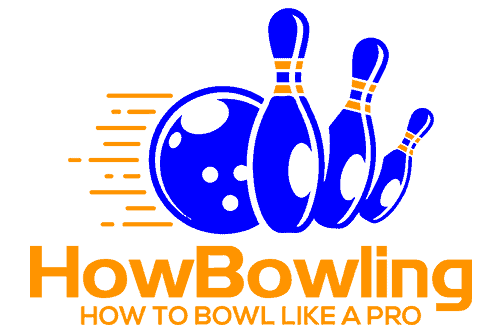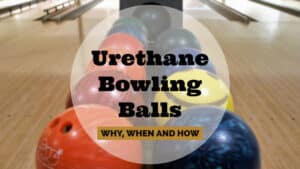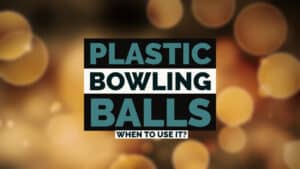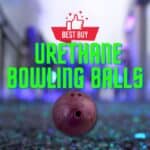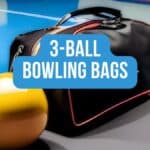A bowling ball may look simple to the eye, but it combines many different parts. Each of these parts has its own significance in improving the performance of a particular bowling ball. Coverstock is one of the most important components of a bowling ball.
Coverstock is the outer layer of a bowling ball that comes in contact with the lane. It is typically made of polyester, urethane, or rubber. The type of coverstock you use will determine how the ball reacts when it hits the lane.
Coverstock comes in a number of diverse materials, and all of them react in a different way on the lane. Some offer more friction and hook potential, while others are more durable and may perform well on heavily oiled bowling lanes.
So, let’s find out how to choose a new bowling ball based on its coverstock and how important this component is in determining the efficacy of a ball.

Different Varieties of Coverstock
If you want to choose the right bowling ball for your style, it’s important to gain some knowledge of the types of coverstock available on the market.
The coverstock material will be mentioned in its specs when you go shopping for a bowling ball. Moreover, you will find out the type of lane condition it is the most suitable for.
There are four main types of coverstock: urethane, plastic, reactive resin, and particle. Let’s find out the characteristics of each of these materials.
Urethane
Urethane coverstock is made of polyurethane, which is one of the most durable materials available out there. This means the ball will not crack or chip, and you can use it for as long as you want.
Another benefit of using a urethane coverstock ball is that it has more hook potential. Bowling balls with urethane coverstock have a patterned finish, which creates more friction on the lane. Pro bowlers can use this feature to their advantage and get the ball to curve according to their liking.
Urethane bowling balls are equally beneficial for beginners because they are easy to control. Depending on whether you are trying to achieve a strike or a spare, you can get a straight and curved throw with this type of ball.
Read an in-depth article on Urethane Bowling Balls here: Urethane Bowling Balls: Why, When and How…
Plastic
The plastic coverstock is made of polyester and is stiff and polished. This type of material does not create a lot of friction on the lane surface; therefore, such a ball does not hook like urethane balls.
While plastic balls are also durable and long-lasting, they are not made to withstand much abuse like polyurethane balls. However, they are more affordable, so beginner bowlers may choose them over other types of balls.
One downside of plastic coverstock balls is that they can be less forgiving than other types of balls. This means that they may not hook as much on dry lanes. However, this can be offset by using a ball with a lower weight. Solid plastic coverstock balls are also not recommended for use on oily lanes.
Read more on Plastic Bowling Balls here: Plastic Bowling Balls – When to use it?
Reactive resin
Reactive resin balls are designed to offer more friction than all other bowling balls; therefore, they have a higher hook potential and pin action. However, using a reactive resin ball is not easy, so only pro bowlers choose these balls.
Reactive resin balls react aggressively in the backend due to their surface texture. Their friction characteristics are being enhanced using plasticizers, thereby increasing their hook potential.
There are two types of reactive bowling balls available on the market: solid reactive and pearl reactive. Solid reactive balls have a large number of tiny pores on the surface. These balls offer a higher coefficient of friction. On the other hand, Pearl reactive balls are characterized by a new material called mica, which makes them better suited to dry lane conditions.
Both these types are made of urethane with added resin particles and other modifications for a textured finish. You will find a huge variety of resin balls available on the market today made for different lane conditions and bowling styles.
Read more on Reactive Resin here: Reactive Resin Bowling Balls – Who is it for?
Particle
Balls with particle coverstock are designed like reactive balls with the addition of silica particles that give them a characteristic texture and make them react differently on the lane.
Depending on the oil pattern, the additives make these balls either more or less friction-producing. They use mica, glass, or ceramic beads, offering more hooks than other balls with a controlled backend.
These balls are designed for heavy lane conditions as they can absorb oil while traveling down the lane. The beads make the ball act like a snow tire and form an arc. If you choose this ball on heavy lane conditions, it will skid more and exhibit a large amount of hook.
Read more on Particle Bowling Balls here: Particle Bowling Balls – How do they work?
How to Choose the Best Coverstock?
If your goal is to have more hook potential, you must look for a softer coverstock with a lower RG.
RG stands for the radius of gyration, which refers to how much the ball’s weight is distributed around the center of the ball. A lower RG means the weight is more evenly distributed, making it easier for the ball to hook.
Urethane coverstock balls typically have lower RG than other bowling balls, making them more likely to hook. However, reactive balls offer an edge over traditional urethane balls as they have been modified to work on different lane conditions.
As such, lane conditions play an important role in choosing the best coverstock. If the lanes are dry, you will want to use a ball with a softer coverstock. If the lanes are oily, you will want to use a ball with a harder coverstock.
Some reactive bowling balls are designed to perform well in medium or heavy lane conditions. There is also a hybrid reactive coverstock ball, which offers the advantages of both solid and pearl reactive balls. You can choose this type of coverstock for medium oil patterns and hook it more religiously.
